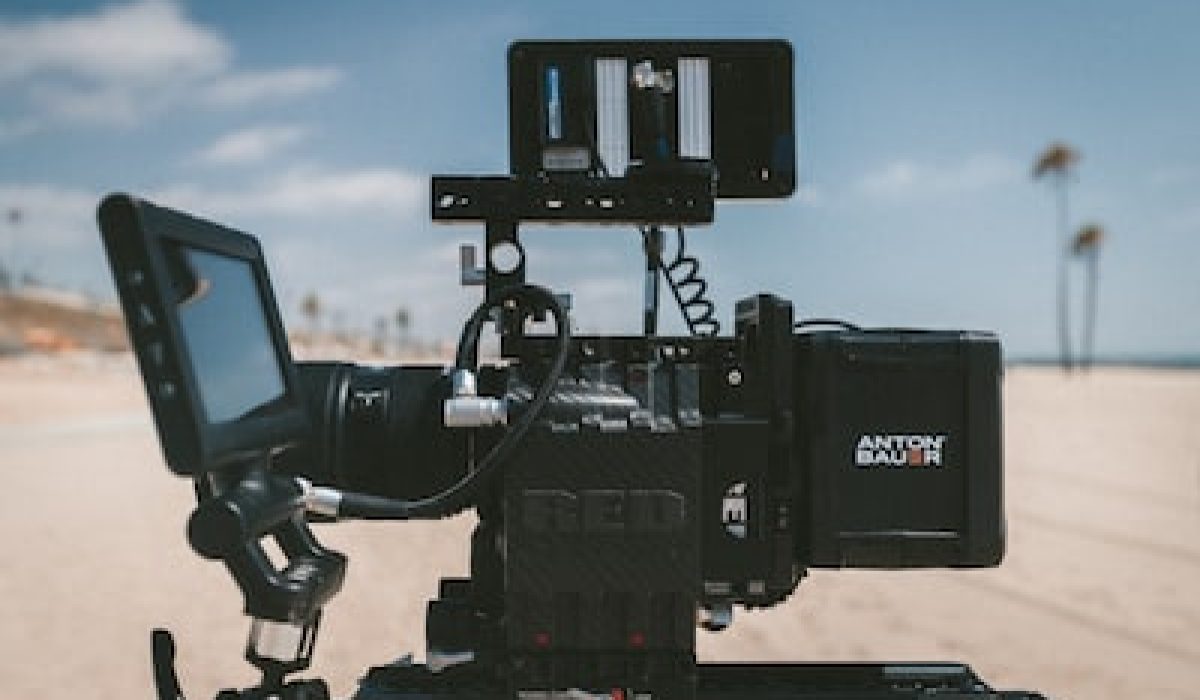Hunting has been an integral part of human survival and evolution since the dawn of mankind. From the early hunting tools and techniques used by our ancestors to the modern advancements in hunting gear, the evolution of hunting gear has been a testament to our ingenuity and resourcefulness. In this blog post, we will explore the fascinating journey of hunting gear through history, examining its effectiveness, cultural influences, and technological innovations. We will also delve into the impact of firearms, the rise of camouflage, and the emergence of sustainable and eco-friendly hunting gear options. Join us as we uncover the fascinating story behind the tools that have shaped the way humans hunt.
Early Hunting Tools And Techniques
In the early days of human civilization, hunting played a vital role in sustaining communities. It was not just a means of acquiring food, but also a way to protect oneself from dangerous predators. To effectively hunt, early humans had to develop tools and techniques that would enhance their hunting skills. The origin of hunting gear can be traced back to the Stone Age, where simple tools like spears and traps were used.
The use of spears was one of the earliest hunting techniques employed by our ancestors. These spears were made by attaching a sharp flint stone or bone to a wooden shaft. The hunters would throw these spears at their prey from a close distance, relying on their agility and precision to make a successful kill. Another technique used during this time was trapping. Hunters would set up snares or pitfall traps to capture animals that would fall into them, making it easier for the hunters to kill them.
As human civilization progressed, so did hunting tools and techniques. The invention of the bow and arrow was a significant milestone in the history of hunting gear. Bows and arrows provided hunters with greater accuracy and range, allowing them to take down larger and faster prey. With their development, hunting became a more efficient and less risky endeavor.
- The early hunters also developed techniques to track and approach their prey without alerting them. One such technique was stalking. Hunters would sneak up on their prey, using the natural terrain and vegetation to conceal their presence. This required patience and careful observation of the prey’s behavior. By studying the animal’s habits and patterns, hunters would increase their chances of a successful hunt.
| Time Period | Hunting Tools | Hunting Techniques |
|---|---|---|
| Stone Age | Spears, Traps | Throwing spears, trapping |
| Bronze Age | Bow and Arrow | Stalking, ambush |
| Iron Age | Net, harpoon | Fishing, deep-sea hunting |
The development of hunting tools and techniques was not limited to the early ages. Every era brought new advancements, each driven by the need for survival and efficiency. For example, during the Bronze Age, techniques like stalking and ambush became more refined, as did the tools. Hunters began using nets and harpoons for fishing and deep-sea hunting, expanding their hunting capabilities to include aquatic prey.
In conclusion, the early days of hunting saw the birth of basic hunting tools and techniques that laid the foundation for the hunting gear we have today. From simple spears and traps to the invention of bows and arrows, early humans constantly innovated to improve their hunting success. These tools and techniques were essential for survival and played a significant role in shaping human civilization.
Evolution Of Hunting Gear Through History 👇
Hunting has been an essential activity for humans since ancient times. As civilization advanced, so did the tools and techniques used for hunting. In this blog post, we will explore the evolution of hunting gear through history, tracing its origins and highlighting the significant changes that have occurred over time.
The origin of hunting gear can be traced back to the earliest humans who relied on simple tools such as spears and rocks to hunt for food. These early hunting tools were crude but effective, allowing early humans to successfully hunt animals for sustenance. However, as time progressed and humans began to settle in agricultural communities, the need for more efficient hunting gear arose.
Period Hunting Gear Prehistoric
Ancient
Middle Ages
Modern Era
Throughout history, cultural influences have also played a vital role in the development of hunting gear. Different regions and tribes developed their own hunting methods and gear based on their unique needs and environments. For example, indigenous communities in North America often used bow and arrow hunting techniques, while Inuit tribes in the Arctic crafted harpoons and ice fishing equipment for their hunting pursuits.
In recent times, there has been a growing focus on sustainable and eco-friendly hunting gear options. With concerns about conservation and environmental impact, hunters now have access to gear made from recycled materials or designed to minimize harm to the ecosystem. This shift reflects an increased awareness of the need to preserve the natural world while engaging in hunting activities.
Primitive Hunting Gear And Its Effectiveness ⏬
When it comes to the history of hunting, it is fascinating to delve into the origins of primitive hunting gear and its effectiveness. Hunting is an activity that dates back to the earliest days of human civilization, when our ancestors relied on their hunting skills to survive. In those times, primitive hunting gear played a crucial role in the success of a hunt.
Origin of Primitive Hunting Gear
The origins of primitive hunting gear can be traced back to the prehistoric times, when early humans began to develop tools and techniques for hunting. These early hunting tools were simple yet effective, and they laid the foundation for the evolution of hunting gear throughout history.
Hunting Techniques and Tools
Early humans used a variety of techniques and tools for hunting. One of the most common techniques was the use of spears, which were used to thrust or throw at prey. Spears were typically made from sharpened sticks or bones, and they allowed hunters to maintain a safe distance from their targets.
Bows and arrows were another significant advancement in primitive hunting gear. The invention of bows and arrows revolutionized hunting, as it provided hunters with improved accuracy and range. With bows and arrows, hunters could target their prey from a distance, increasing their chances of a successful kill.
- The Effectiveness of Primitive Hunting Gear
The effectiveness of primitive hunting gear was remarkable considering its simplicity. Early hunting tools and techniques allowed humans to secure food, clothing, and other resources necessary for survival. The development of spears, bows, and arrows significantly increased the success rate of hunts, enabling early humans to become skilled predators.
The tools and techniques used in primitive hunting were also influenced by the cultural practices of different societies. Cultural influences played a vital role in the development of hunting gear, with various regions and tribes adopting specific tools and techniques that were suited to their environments and prey.
Advantages of Primitive Hunting Gear Disadvantages of Primitive Hunting Gear 1. Simple and easy to use. 1. Limited range and accuracy compared to modern hunting gear. 2. Lightweight and portable. 2. Lack of specialized features or accessories. 3. Allowed hunters to maintain distance from prey. 3. Limited hunting capabilities for larger or faster prey.
- The Evolution of Hunting Gear
The development of primitive hunting gear marked the beginning of a remarkable evolution. Over time, as humans learned more about hunting and adapted to their environment, hunting gear became more sophisticated and specialized. From the simple tools of early humans to the complex and technologically advanced gear of today, the evolution of hunting gear is a testament to human ingenuity and our endless pursuit of improving hunting efficiency.
In conclusion, primitive hunting gear played a crucial role in the success of hunts throughout history. The development of simple yet effective tools and techniques allowed early humans to secure food, clothing, and other resources necessary for survival. The effectiveness of primitive hunting gear paved the way for the evolution of hunting gear as we know it today.
Cultural Influences On Hunting Gear Development
The development of hunting gear throughout history has been influenced by various cultural factors. As different societies emerged and evolved, their hunting techniques and gear were shaped by their unique cultural beliefs, practices, and needs. Cultural influences played a significant role in the design, materials, and functionality of hunting gear, ultimately affecting its effectiveness in different hunting environments. Understanding these cultural influences can provide valuable insights into the evolution of hunting gear and its significance in different societies.
One such cultural influence on hunting gear development was the belief systems and spiritual practices of various societies. In many indigenous cultures, hunting was not solely a means of obtaining food but also a sacred ritual. The belief in the interconnectedness of humans, animals, and the natural world often resulted in the creation of hunting gear with symbolic elements. For example, certain tribes would adorn their hunting tools with specific feathers, colors, or patterns to invoke the blessings of the spirits and ensure a successful hunt. These cultural influences not only added a spiritual dimension to hunting gear but also influenced its design and aesthetics.
In addition to spirituality, the geographical and environmental factors of a region also influenced hunting gear development. Different landscapes, climates, and wildlife habitats required hunters to adapt their gear accordingly. For example, Inuit hunters in the Arctic developed specialized hunting gear such as the “inuksuk” – a stone structure used as a navigation aid and hunting marker. These markers helped in tracking game and navigating through treacherous ice-covered terrains. The cultural knowledge and adaptation to the specific hunting environment played a crucial role in the development of effective hunting gear.
- Furthermore, cultural traditions and social structures influenced the type of hunting gear used in different societies. For instance, in medieval Europe, hunting was a popular recreational activity among the nobility. The aristocracy developed elaborate hunting gear, including falconry equipment, hunting dogs, and luxurious clothing, to showcase their status and wealth. On the other hand, indigenous communities in different parts of the world relied on hunting as a means of sustenance and survival. Their hunting gear consisted of practical tools such as spears, bows, and traps, designed to efficiently capture game animals.
- The globalization and cultural exchanges that occurred during the age of exploration also had an impact on hunting gear development. As different cultures interacted and traded with each other, ideas and technologies related to hunting gear were shared and adopted. This led to the introduction of new materials, such as metal, and innovative techniques, such as metalworking, in the production of hunting gear. The availability of new resources and knowledge broadened the range of options for hunters, allowing them to develop more efficient and versatile hunting gear.
| Origin | Hunting Gear |
|---|---|
| Europe | Bows and Arrows |
| Africa | Spears and Traps |
| Asia | Falconry Equipment |
In conclusion, cultural influences have played a significant role in the development of hunting gear throughout history. Spiritual beliefs, environmental factors, social structures, and cultural exchanges have all shaped the design, materials, and functionality of hunting gear. From the sacred rituals of indigenous tribes to the luxury hunting gear of European nobility, each society’s cultural influences have left an indelible mark on the evolution of hunting gear. Exploring these cultural influences provides us with a deeper understanding of the importance of hunting gear in different societies and its role in their survival, recreation, and spiritual traditions.
The Invention Of Bows And Arrows For Hunting
Throughout history, humans have continuously developed innovative and efficient tools and techniques for hunting. One of the most significant inventions in the realm of hunting gear was the creation of bows and arrows. This pioneering technology revolutionized hunting methods and greatly enhanced the success rates of hunting expeditions.
Strong and flexible, bows and arrows offered hunters a new level of precision and power. The origins of these tools can be traced back thousands of years, with evidence suggesting their use in various ancient civilizations. However, it was during the Paleolithic period that the bow and arrow system underwent significant advancements.
Advancements In Hunting Gear During The Middle Ages
During the Middle Ages, advancements in hunting gear played a crucial role in the lives of hunters and their ability to successfully capture game. As societies became more organized and skilled, techniques and tools for hunting became more sophisticated and efficient. These advancements revolutionized the way hunting was conducted and contributed to the overall progress of human civilization.
Origin of Hunting Gear
Hunting has been a fundamental activity for humans since ancient times. In the early days, our ancestors relied on primitive hunting gear, such as wooden spears and stone tools, to catch their prey. However, as civilizations developed, hunting gear also evolved to meet the needs and challenges of the Middle Ages.
Evolution of Hunting Gear
Throughout the Middle Ages, the advancement of hunting gear was driven by a combination of cultural influences, technological innovations, and the need for more effective tools. One significant development was the invention of the crossbow, which provided hunters with greater accuracy and distance. This allowed them to hunt larger game, such as deer and boar, from a safer distance. The crossbow also enabled hunters to maintain a covert presence, as it was quieter than other hunting weapons of the time.
Introduction of Firearms
Perhaps the most significant advancement in hunting gear during the Middle Ages was the introduction of firearms. Initially, firearms were large and cumbersome, making them difficult to use for hunting purposes. However, as technological advancements were made, firearms became more compact, easier to handle, and more efficient in capturing game. The use of firearms in hunting increased the success rate and expanded the range of game that could be pursued.
Impact Of Firearms On Hunting Gear Design
The Impact Of Firearms On Hunting Gear Design
Firearms have had a profound effect on the design and development of hunting gear throughout history. The introduction of firearms revolutionized the way hunters approached their craft, allowing them to hunt with greater accuracy and efficiency. As a result, hunting gear had to adapt to accommodate the unique needs and challenges posed by firearms.
One of the key changes brought about by firearms was the need for specialized clothing and accessories to protect hunters from the recoil and heat generated by these powerful weapons. The development of durable and heat-resistant fabrics, such as Kevlar, became crucial in ensuring the safety and comfort of hunters. Additionally, the design of hunting jackets and vests evolved to include specific features, such as reinforced shoulder padding, to absorb the impact of the gun and reduce recoil-related injuries.
Another significant impact of firearms on hunting gear design was the need for improved storage and transportation solutions for ammunition. With the introduction of firearms, hunters had to carry a larger quantity of ammunition, necessitating the creation of durable and waterproof pouches or bags to protect the cartridges from moisture and damage. Moreover, the design of gun cases and holsters became essential to ensure the safe and convenient transportation of firearms, allowing hunters to easily access their guns while keeping them secure during their hunting expeditions.
- Keywords: origin, hunting gear
| Time Period | Key Developments |
|---|---|
| 18th – 19th Century | The invention of breech-loading firearms led to the development of adaptable and modular hunting gear, allowing hunters to easily switch between firearms and other tools. |
| 20th Century | The introduction of semi-automatic and bolt-action rifles resulted in the design of lightweight and ergonomic hunting gear for enhanced maneuverability in different terrains. |
| Modern Era | Technological advancements, such as night-vision scopes and suppressors, have influenced the design of hunting gear to incorporate mounting options and compatibility with these accessories. |
The Rise Of Camouflage In Hunting Gear
Camouflage has become an essential element in hunting gear over the years, providing hunters with a significant advantage in blending into their natural surroundings. The concept of camouflage in hunting gear has evolved significantly, allowing hunters to become more invisible to the game they pursue. The origin of camouflage in hunting gear can be traced back to early hunting tools and techniques used by our ancestors.
Early hunting tools, such as spears and rocks, relied heavily on the hunter’s ability to approach their prey undetected. They would often use natural elements, such as leaves and branches, to conceal themselves from the keen eyes of animals. This early form of camouflage laid the foundation for the development of more advanced hunting gear in the future.
The evolution of hunting gear throughout history has seen various cultures and civilizations contributing to the development and improvement of camouflage techniques. Cultural influences played a significant role in shaping the design and effectiveness of hunting gear. Different regions and environments required specialized camouflage patterns and materials, ensuring hunters could blend seamlessly into their surroundings.
- One notable milestone in the rise of camouflage in hunting gear was the invention of bows and arrows. This revolutionary technology allowed hunters to keep a safe distance from their prey while maintaining stealth. The inclusion of elements such as animal hides and natural dyes helped hunters blend into the environment more effectively, increasing their chances of a successful hunt.
| Advancements In Hunting Gear During The Middle Ages | Impact Of Firearms On Hunting Gear Design | Technological Innovations In Modern Hunting Gear |
|---|---|---|
| The Middle Ages witnessed significant advancements in hunting gear, including the development of more sophisticated forms of camouflage. Knights and nobles relied on specialized hunting gear, such as ghillie suits, which were made from a combination of natural fibers and animal skins. These suits provided excellent concealment in forested areas, allowing hunters to get closer to their prey without detection. | The introduction of firearms had a profound impact on the design of hunting gear, including camouflage. The need for increased accuracy and range prompted hunters to adapt to new methods. Camouflaged clothing, ghillie suits, and face paint became popular among hunters as they aimed to conceal their presence from both animals and rival hunters. The use of natural and synthetic materials further enhanced the effectiveness of camouflage in hunting gear. | Modern hunting gear has seen significant technological innovations in recent years. Advancements in camouflage technology, such as 3D camouflage patterns and high-definition printing, have revolutionized the effectiveness of hunting gear. These innovations enable hunters to blend seamlessly into their surroundings, even in highly detailed environments. Additionally, the development of lightweight and breathable materials has made modern camouflage gear more comfortable and practical for hunters. |
Sustainable and eco-friendly hunting gear options have also emerged in response to the growing concern for environmental conservation. Many hunters now opt for gear made from organic materials and dyes, minimizing the impact on the natural environment. Additionally, organizations and manufacturers are actively promoting ethical hunting practices that emphasize respect for wildlife and the environment. The future of hunting gear lies in the integration of advanced technology with sustainable and eco-friendly design principles.
In conclusion, the rise of camouflage in hunting gear has been a gradual process, influenced by the early hunting techniques of our ancestors and shaped by cultural influences throughout history. The continuous advancements in hunting gear, particularly in terms of camouflage, have enabled hunters to become more effective and efficient in their pursuit. As technology and environmental awareness continue to evolve, we can expect further innovations in hunting gear that prioritize sustainability and eco-friendliness.
Technological Innovations In Modern Hunting Gear
The technological innovations in modern hunting gear have revolutionized the way hunters approach their craft. With advancements in technology, hunting gear has become more efficient, effective, and environmentally friendly. These innovations have not only made hunting safer and more enjoyable but have also enhanced the overall hunting experience. From high-tech optics to cutting-edge camouflage, modern hunting gear is designed to give hunters an edge in the field.
One of the key technological advancements in modern hunting gear is the use of advanced optics. With the advent of high-quality binoculars and scopes, hunters can now spot game from a distance with crystal-clear clarity. These optics are equipped with features like image stabilization and range finders, allowing hunters to accurately assess the distance and size of their prey. Additionally, night vision and thermal imaging technologies have greatly enhanced the visibility during low-light conditions, giving hunters an advantage when pursuing nocturnal animals.
Another significant innovation in modern hunting gear is the development of advanced camouflage materials. Traditional camouflage patterns were designed to blend into specific environments, such as forests or grasslands. However, with the introduction of digital and adaptive camouflage patterns, hunters can now seamlessly blend into various terrains. These patterns utilize high-resolution images and intricate designs to create a natural and realistic appearance. Furthermore, modern camouflage materials are lightweight, breathable, and moisture-wicking, ensuring maximum comfort during long hunts.
Key Innovations Description GPS Tracking Devices GPS tracking devices have revolutionized the way hunters navigate the wilderness. These devices allow hunters to mark important locations, track their movement, and even share their location with others. Trail Cameras Trail cameras have become a vital tool for hunters. These cameras can be strategically placed in different locations to capture images or videos of wildlife in their natural habitat. This information helps hunters identify patterns in animal behavior and plan their hunts accordingly. Scent Control Systems Scent control systems have significantly minimized human scent detection by using advanced technologies such as activated carbon and antimicrobial treatments. This allows hunters to remain undetected by game animals, increasing their chances of a successful hunt.
In addition to optics and camouflage, modern hunting gear also includes several other innovative tools and equipment. GPS tracking devices have become an essential navigation tool for hunters, allowing them to mark important locations, track their movement, and even share their location with others. Trail cameras have also become increasingly popular among hunters, providing valuable insights into wildlife behavior and movement patterns. These cameras can be strategically placed in different areas, capturing images or videos of game in their natural habitat. Lastly, scent control systems have revolutionized the way hunters manage their scent. These systems utilize advanced technologies, such as activated carbon and antimicrobial treatments, to minimize human scent detection by game animals.
In conclusion, the technological innovations in modern hunting gear have greatly enhanced the hunting experience. From advanced optics to state-of-the-art camouflage materials, these innovations have revolutionized the way hunters approach their craft. With tools like GPS tracking devices, trail cameras, and scent control systems, hunters now have access to a wide range of high-tech equipment that gives them an edge in the field. These technological advancements not only make hunting safer and more efficient but also contribute to the overall sustainability and eco-friendliness of hunting practices. As technology continues to evolve, we can expect even more exciting innovations in the world of hunting gear.
Sustainable And Eco-Friendly Hunting Gear Options
With increasing awareness and concern for the environment, hunters and outdoor enthusiasts are seeking sustainable and eco-friendly hunting gear options. These alternatives not only minimize the negative impact on the environment but also promote ethical hunting practices. In this blog post, we will explore some of the innovative hunting gear options that prioritize sustainability without compromising on performance.
Sustainable hunting gear is designed to minimize resource consumption and waste production. One example is the use of recycled materials in the manufacturing process. Companies are utilizing recycled plastics, fibers, and metals to produce durable and high-performance hunting gear such as backpacks, clothing, and accessories. By repurposing materials, the hunting industry contributes to reducing the overall carbon footprint and the strain on natural resources.
Eco-friendly hunting gear focuses on eliminating harmful chemicals and toxins during production. For instance, hunting clothing is now being treated with less toxic substances, reducing the release of pollutants into the environment. Additionally, eco-friendly gear often undergoes rigorous testing to ensure it complies with environmental regulations and standards. By using these products, hunters can minimize their impact on ecosystems while still enjoying their outdoor pursuits.
Another approach to sustainable hunting gear is adopting renewable energy sources for powering equipment. Solar-powered battery packs, for example, can provide a reliable and clean energy source for devices like trail cameras, GPS units, and headlamps. By harnessing the power of the sun, hunters can eliminate the need for disposable batteries and reduce hazardous waste accumulation in the wilderness.
In conclusion, sustainable and eco-friendly hunting gear options are increasingly available to environmentally-conscious hunters. From utilizing recycled materials to reducing the use of harmful chemicals and adopting renewable energy sources, these alternatives demonstrate a commitment to preserving the natural world while enjoying outdoor activities. By making responsible choices, hunters can contribute to the conservation of ecosystems and ensure the enjoyment of hunting for generations to come.
Frequently Asked Questions
What were some early hunting tools and techniques?
Early hunting tools included sharp stones, wooden spears, and traps. Techniques such as stalking, ambushing, and driving were commonly used.
How has hunting gear evolved throughout history?
Hunting gear has evolved from basic tools to sophisticated equipment. It has become more efficient, durable, and specialized to meet the needs of different hunting situations.
What was the effectiveness of primitive hunting gear?
Primitive hunting gear was effective for survival hunting but had limitations in terms of range and accuracy. However, it was sufficient for hunting small game and gathering food.
How have cultural influences shaped the development of hunting gear?
Different cultures developed unique hunting gear based on their needs, resources, and traditions. Cultural influences can be seen in the materials used, designs, and techniques employed in hunting gear.
When were bows and arrows invented for hunting?
Bows and arrows were invented for hunting around 10,000 years ago during the late Paleolithic period. They revolutionized hunting by providing longer range and improved accuracy.
What were some advancements in hunting gear during the Middle Ages?
During the Middle Ages, advancements in hunting gear included crossbows, improved arrowheads, and better armor for protection during hunting expeditions.
How did the invention of firearms impact hunting gear design?
The invention of firearms brought significant changes to hunting gear design. It led to the development of rifles, shotguns, and specialized hunting ammunition for improved accuracy and efficiency.
Why did camouflage become important in hunting gear?
Camouflage became important in hunting gear to blend with the environment and avoid detection by game animals. It allows hunters to get closer to their targets without being noticed.
What are some technological innovations in modern hunting gear?
Modern hunting gear incorporates technologies such as rangefinders, trail cameras, GPS devices, and advanced materials to enhance the hunting experience and improve success rates.
Are there sustainable and eco-friendly hunting gear options available?
Yes, there are sustainable and eco-friendly hunting gear options available. These include biodegradable ammo, organic camouflage materials, and ethical hunting practices that promote conservation and minimize environmental impact.




